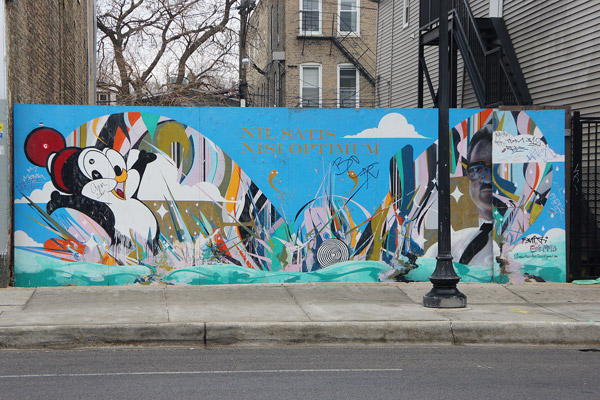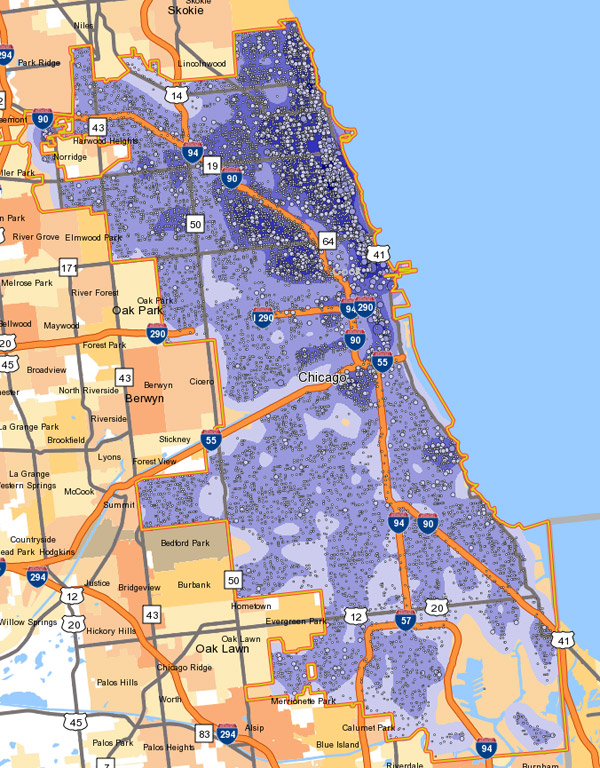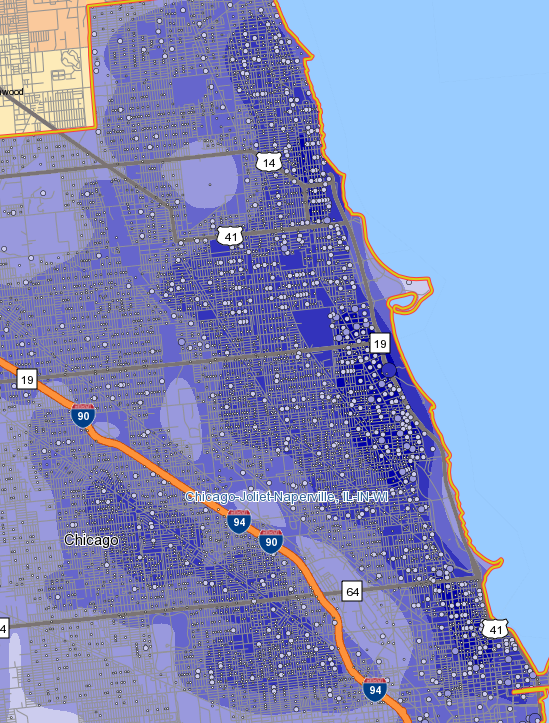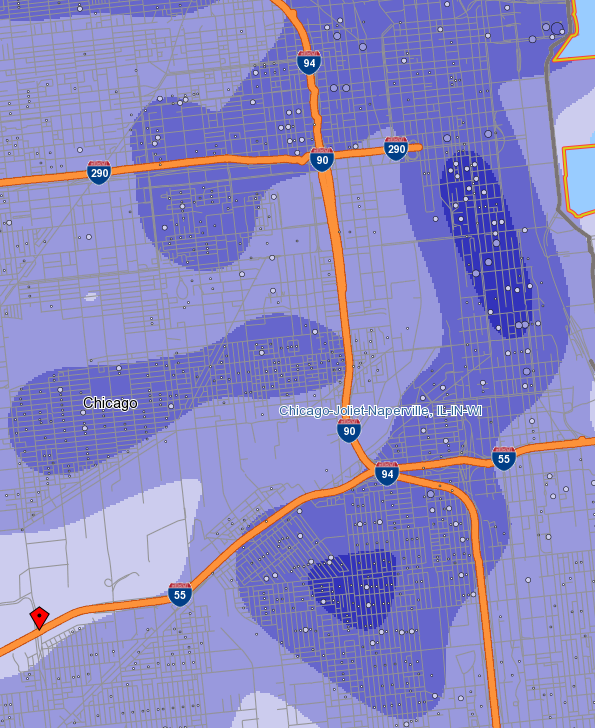
'Nothing But the Best Is Good Enough'
The other day Richard Florida added Chicago to his list of "Class-Divided Cities"; it's not exactly what you'd expect unless you're familiar with his work. By "class" he means the "creative class":
The creative class includes people who work in science and technology, business and management, arts, culture, media, and entertainment, law, and healthcare professions. All told its ranks make up 35.1 percent of the metro's workers, slightly higher than the national average. These are high-skilled, highly-educated, and high-paying positions where workers average $75,033 per year in wages and salaries. There are 729 tracts (34.5 percent of the city's total) that are more than 40 percent creative class workers, 407 (19.3 percent) with more than 50 percent, 67 (3.2 percent) with more than two-thirds, and nine tracts (0.43 percent) where the creative class makes up more than three-quarters of all residents.
Florida slices Chicago into three classes: the creative class (top locations Hyde Park, Lakeview, and Oak Park), the service class (average income $30,946, top location Englewood and Austin), and the working class (factory jobs, transportation, construction, average salary $40,295, top locations Little Village, Gary, and Brighton Park). The geography looks a lot like what I found when I looked at various employment types in Chicago, which get a bit more fine-grained in terms of where employees of more specific industries live.
So I was curious, after reading Florida's post, where Chicago's creative types live, or at least as close as higher-level NAICS data could tell me—excluding the lawyers and businessmen and scientists and just looking at "arts, entertainment, and recreation." It's a bit broad, including everyone from dancers to curators to agents to carnies, but it actually matches up with Florida's data reasonably well, and what Robert Sampson told Florida: "bohemians (actors, dancers, writers, etc.) are not necessarily high income. The creative class high earners like to be near the bohemians but perhaps not equal feelings the reverse way as reflected in the ongoing debate over gentrification."

Here's a closer look at the north side:

Big swaths along the Milwaukee and Lincoln/Clark corridors, which might explain why that's where all the good bars are. Which also make you more creative. It's a virtuous circle.
And the near south side:

The swath through Pilsen is unsurprising, but what about Bridgeport? The NAICS codes also include professional and semiprofessional sports teams (including jai alai teams—props for that, Census), so it wouldn't surprise me if some of Bridgeport's creatives are in the employ of the Chicago White Sox. Well, I think it's art.
Photograph: ed_whetstone


